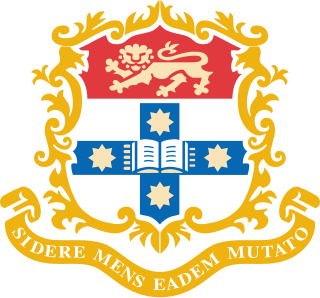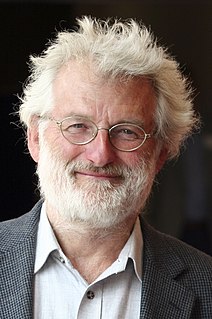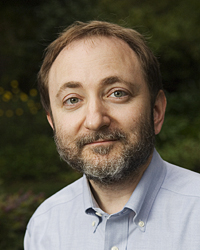
The University of Sydney is an Australian public research university in Sydney, Australia. Founded in 1850, it was Australia's first university and is regarded as one of the world's leading universities. The university is colloquially known as one of Australia's sandstone universities. Its campus is ranked in the top 10 of the world's most beautiful universities by the British Daily Telegraph and The Huffington Post, spreading across the inner-city suburbs of Camperdown and Darlington. The university comprises 9 faculties and university schools, through which it offers bachelor, master and doctoral degrees.

Baylor College of Medicine (BCM), located in the Texas Medical Center in Houston, Texas, US, is a health sciences university. It includes a medical school, Baylor College of Medicine; the Graduate School of Biomedical Sciences; the School of Allied Health Sciences; and the National School of Tropical Medicine. The school, located in the middle of the world's largest medical center, is part owner of Baylor St. Luke's Medical Center, part of the CHI St. Luke's Health system, and has hospital affiliations with: Harris Health System, Texas Children's Hospital, The University of Texas MD Anderson Cancer Center, Memorial Hermann – The Institute for Rehabilitation and Research, Menninger Clinic, the Michael E. DeBakey Veterans Affairs Medical Center and Children's Hospital of San Antonio.

The University of Wollongong is an Australian public research university located in the coastal city of Wollongong, New South Wales, approximately 80 kilometres south of Sydney. As of 2017 the university has an enrolment of more than 32,000 students, an alumni base of more than 131,859 and over 2,000 staff members.

Sir John Edward Sulston was a British biologist and academic who won the Nobel Prize in Physiology or Medicine for his work on the cell lineage and genome of the worm Caenorhabditis elegans in 2002 with his colleagues Sydney Brenner and Robert Horvitz. He was a leader in human genome research and Chair of the Institute for Science, Ethics and Innovation at the University of Manchester. Sulston was in favour of science in the public interest, such as free public access of scientific information and against the patenting of genes and the privatisation of genetic technologies.
The Walter and Eliza Hall Institute of Medical Research, more commonly known as the Walter and Eliza Hall Institute, abbreviated as WEHI, is Australia's oldest medical research institute. Sir Frank Macfarlane Burnet, who won the Nobel Prize in 1960 for his work in immunology, was director from 1944 to 1965. Burnet developed the ideas of clonal selection and acquired immune tolerance. Later, Professor Donald Metcalf discovered and characterised colony-stimulating factors. As of 2015, the institute hosted more than 750 researchers who work to understand, prevent and treat diseases including blood, breast and ovarian cancers; inflammatory diseases (autoimmunity) such as rheumatoid arthritis, type 1 diabetes and coeliac disease; and infectious diseases such as malaria, HIV and hepatitis B and C.

The University of Lahore or UOL is a private university located in Lahore, Punjab, Pakistan. It was founded at collegiate level in 1999 under the IBADAT Educational Trust and was granted full degree awarding status in 2002. It is one of the Largest Private universities in Pakistan. Subjects include Medicine, Engineering, Arts and Social Sciences. All programs are recognized by the Higher Education Commission (HEC) and government regulatory bodies in Pakistan. It is accredited by the Pakistan Engineering Council (PEC), Pakistan Bar Council, Pakistan Medical and Dental Council (PMDC), Pakistan Nursing Council, Pharmacy Council of Pakistan etc.

Manipal Academy of Higher Education, formerly known as Manipal University, is a private research institute deemed to be university located in the university town of Manipal, Udupi, Karnataka, India. Manipal Academy of Higher Education has branch campuses in Dubai and Mangalore. It also has sister campuses in Sikkim and Jaipur. It is a member of the Association of Commonwealth Universities.

The Bion satellites, also named Biocosmos, is a series of Soviet biosatellites focused on space medicine. They are part of the Kosmos satellites.

Andrew Zachary Fire is an American biologist and professor of pathology and of genetics at the Stanford University School of Medicine. He was awarded the 2006 Nobel Prize for Physiology or Medicine, along with Craig C. Mello, for the discovery of RNA interference (RNAi). This research was conducted at the Carnegie Institution of Washington and published in 1998.

The U.P. College of Science is one of the several colleges of the University of the Philippines. It is located in the UP Diliman Campus, which is the flagship campus of the University of the Philippines System.
C. Thomas Caskey is an American internist who has been a prominent medical geneticist and biomedical entrepreneur. He is editor of the Annual Review of Medicine.
The University of Sydney School of Dentistry also known as Sydney Dental School is Australia’s first dental school and a constituent body of the University of Sydney, Australia. It has been training dental practitioners for over 100 years, and fosters research excellence, innovation and collaboration at the highest level.
The American Society for Biochemistry and Molecular Biology (ASBMB) is a learned society that was founded on December 26, 1906 at a meeting organized by John Jacob Abel. The roots of the society were in the American Physiological Society, which had been formed some 20 years earlier.
Charles Brenner born October 30, 1961 is the Roy J. Carver Chair of Biochemistry and a director of the Obesity Initiative at the University of Iowa. He is a major contributor to work on nicotinamide adenine dinucleotide metabolism, who discovered the eukaryotic nicotinamide riboside (NR) kinase pathway.
Professor Chris Goodnow BVSc, PhD, FAA FRS MNAS is an immunology researcher and the current Executive Director of the Garvan Institute of Medical Research. He holds the Bill and Patricia Ritchie Foundation Chair and is a Conjoint Professor in the Faculty of Medicine at UNSW Sydney. He holds dual Australian and US citizenship.

The Minnesota Supercomputing Institute (MSI) in Minneapolis, Minnesota is a core research facility of the University of Minnesota that provides hardware and software resources, as well as technical user support, to faculty and researchers at the University and at other institutions of higher education in Minnesota. MSI is located in Walter Library, on the University of Minnesota’s Twin Cities campus.

John Stanley Mattick is an Australian molecular biologist known for his efforts to assign function to non-coding DNA. Mattick was the Executive Director of the Garvan Institute of Medical Research from 2012 to 2018. He joined Genomics England in May 2018 as Chief Executive Officer.
The University of Sydney Nano Institute is a flagship multidisciplinary research institute at the University of Sydney in Camperdown, Sydney, Australia, focused on transforming our economy, society and everyday life through multidisciplinary research in nanoscale science and technology. It is one of ten multidisciplinary research institutes at the University of Sydney including the Charles Perkins Centre and the Brain and Mind Centre.
William Eaton is a biophysicist who is a Distinguished Investigator, Section Chief of the Biophysical Chemistry Section in the Laboratory of Chemical Physics, and Chief of the Laboratory of Chemical Physics at the National Institute of Diabetes and Digestive and Kidney Diseases, part of the United States National Institutes of Health.














